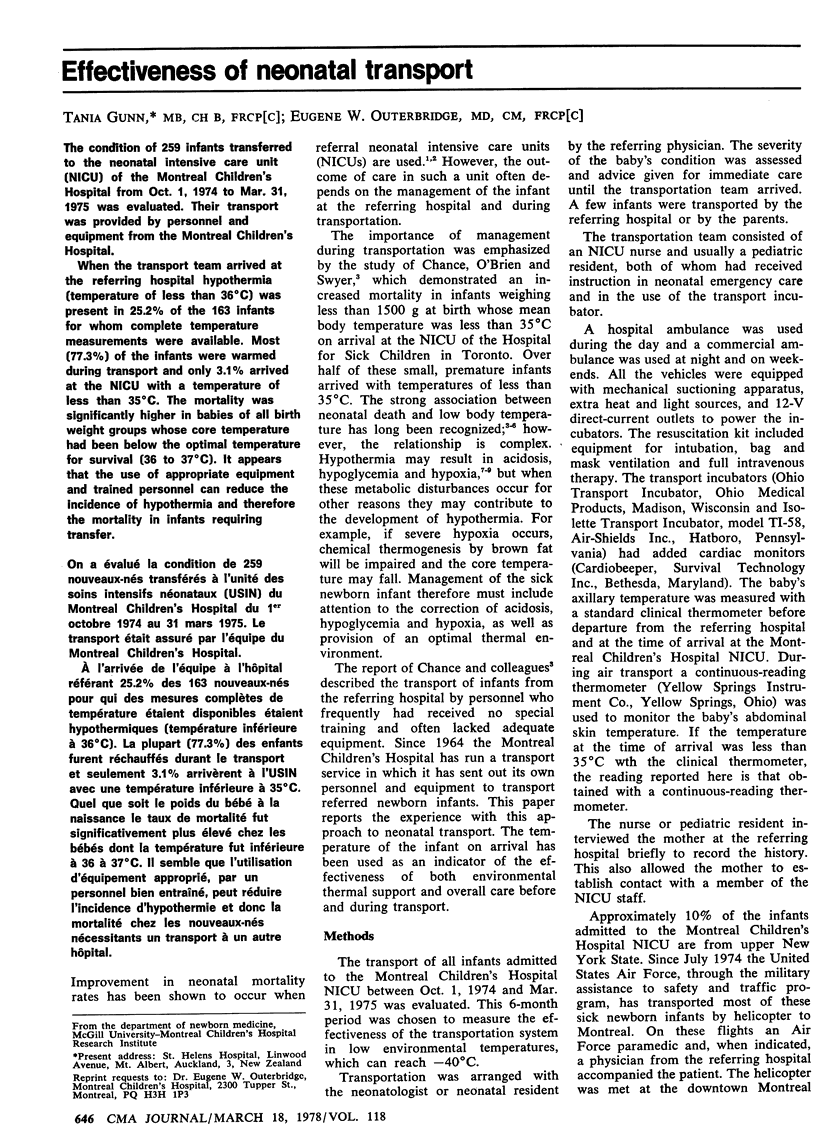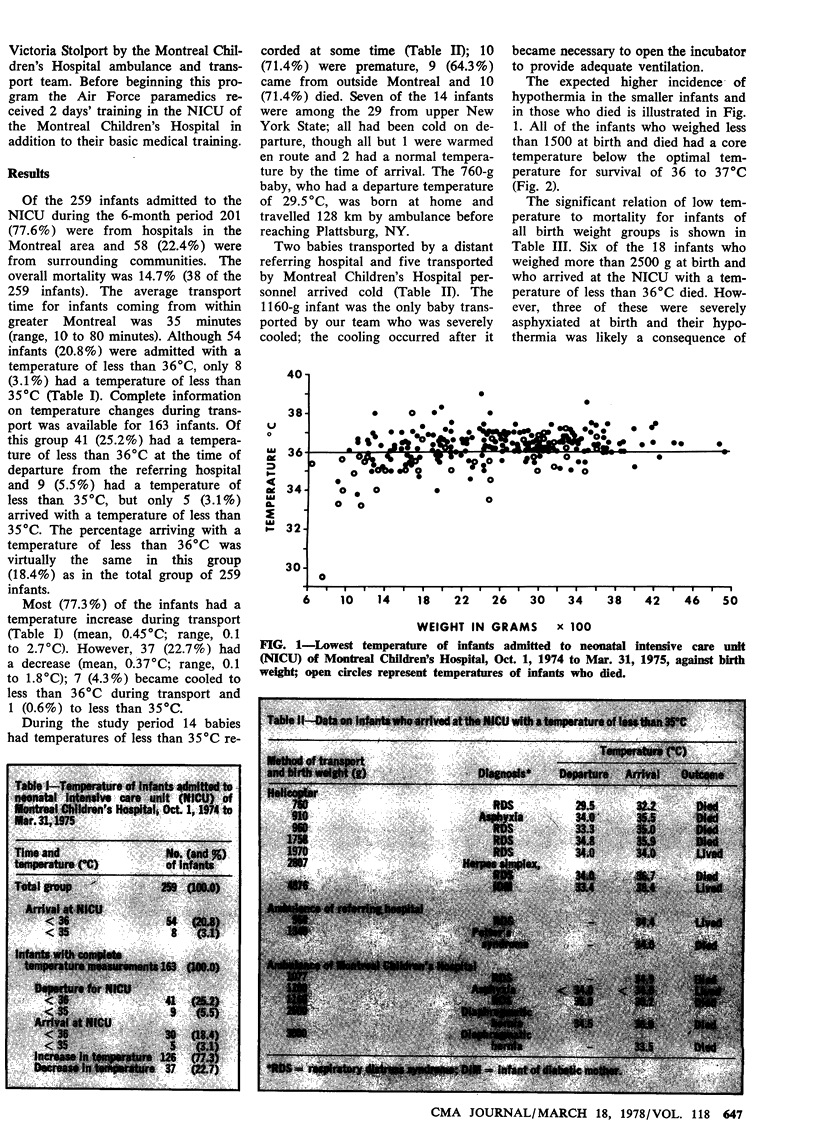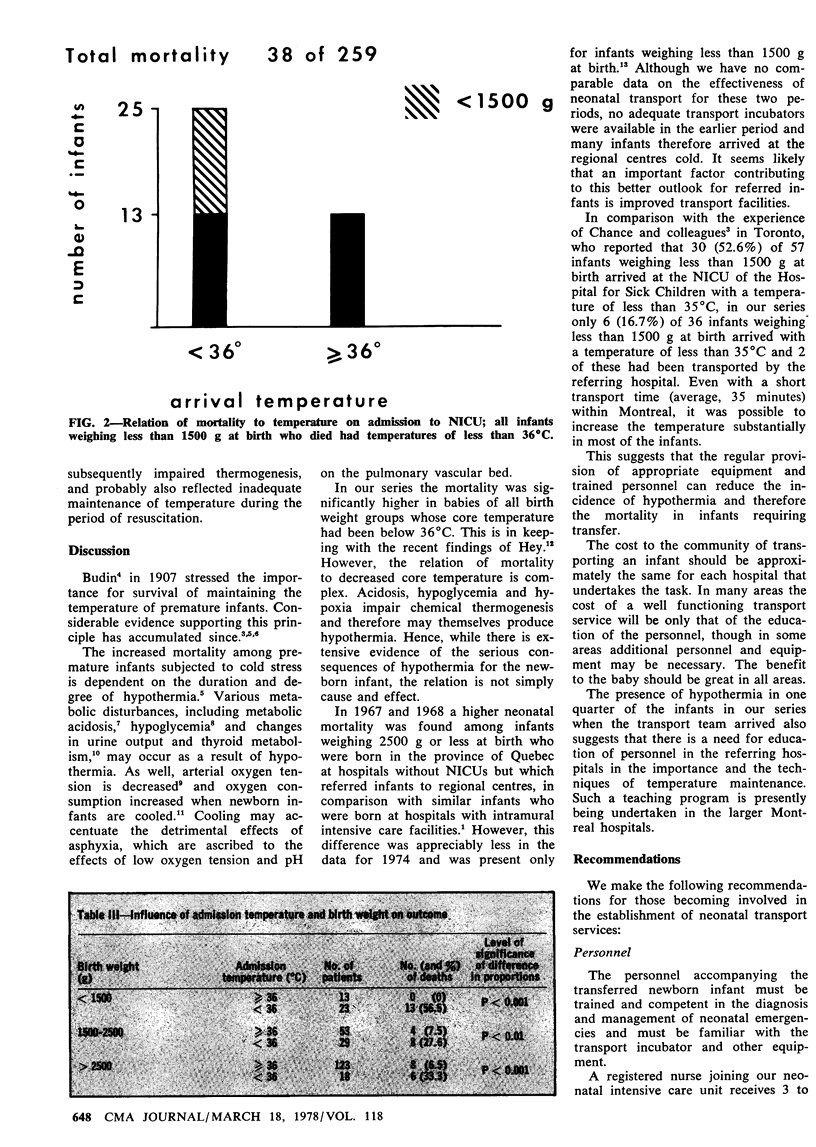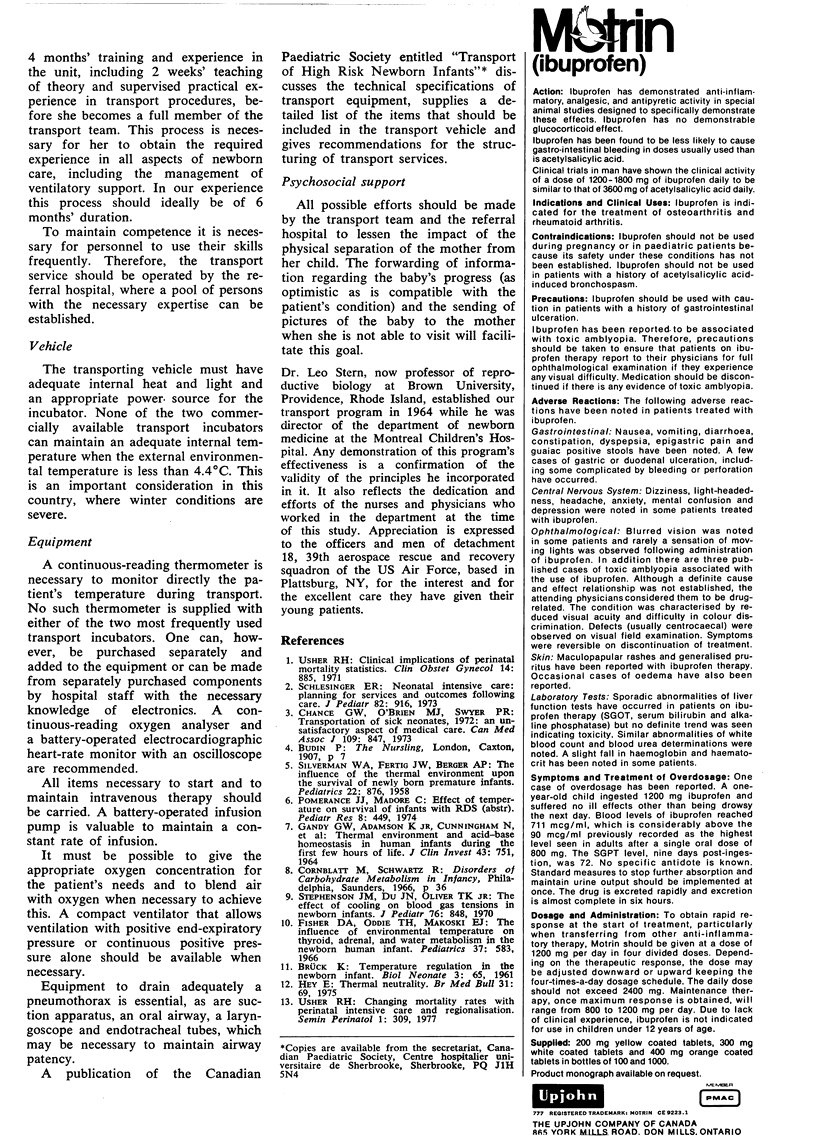Abstract
The condition of 259 infants transferred to the neonatal intensive care unit (NICU) of the Montreal Children's Hospital from Oct. 1, 1974 to Mar. 31, 1975 was evaluated. Their transport was provided by personnel and equipment from the Montreal Children's Hospital. When the transport team arrived at the referring hospital hypothermia (temperature of less than 36 degrees C) was present in 25.2% of the 163 infants for whom complete temperature measurements were available. Most (77.3%) of the infants were warmed during transport and only 3.1% arrived at the NICU with a temperature of less than 35 degrees C. The mortality was significantly higher in babies of all birth weight groups whose core temperature had been below the optimal temperature for survival (36 to 37 degrees C). It appears that the use of appropriate equipment and trained personnel can reduce the incidence of hypothermia and therefore the mortality in infants requiring transfer.
Full text
PDF



Selected References
These references are in PubMed. This may not be the complete list of references from this article.
- Chance G. W., O'Brien M. J., Swyer P. R. Transportation of sick neonates, 1972: an unsatisfactory aspect of medical care. Can Med Assoc J. 1973 Nov 3;109(9):847–851. [PMC free article] [PubMed] [Google Scholar]
- Fisher D. A., Oddie T. H., Makoski E. J. The influence of environmental temperature on thyroid, adrenal, and water metabolism in the newborn human infant. Pediatrics. 1966 Apr;37(4):583–591. [PubMed] [Google Scholar]
- GANDY G. M., ADAMSONS K., Jr, CUNNINGHAM N., SILVERMAN W. A., JAMES L. S. THERMAL ENVIRONMENT AND ACID-BASE HOMEOSTASIS IN HUMAN INFANTS DURING THE FIRST FEW HOURS OF LIFE. J Clin Invest. 1964 Apr;43:751–758. doi: 10.1172/JCI104959. [DOI] [PMC free article] [PubMed] [Google Scholar]
- Hey E. Thermal neutrality. Br Med Bull. 1975 Jan;31(1):69–74. doi: 10.1093/oxfordjournals.bmb.a071244. [DOI] [PubMed] [Google Scholar]
- SILVERMAN W. A., FERTIG J. W., BERGER A. P. The influence of the thermal environment upon the survival of newly born premature infants. Pediatrics. 1958 Nov;22(5):876–886. [PubMed] [Google Scholar]
- Schlesinger E. R. Neonatal intensive care: planning for services and outcomes following care. J Pediatr. 1973 Jun;82(6):916–920. doi: 10.1016/s0022-3476(73)80417-2. [DOI] [PubMed] [Google Scholar]
- Stephenson J. M., Du J. N., Oliver T. K., Jr The effect of cooling on blood gas tensions in newborn infants. J Pediatr. 1970 Jun;76(6):848–852. doi: 10.1016/s0022-3476(70)80364-x. [DOI] [PubMed] [Google Scholar]
- Usher R. H. Clinical implications of perinatal mortality statistics. Clin Obstet Gynecol. 1971 Sep;14(3):885–925. doi: 10.1097/00003081-197109000-00014. [DOI] [PubMed] [Google Scholar]
- Usher R. Changing mortality rates with perinatal intensive care and regionalization. Semin Perinatol. 1977 Jul;1(3):309–319. [PubMed] [Google Scholar]


